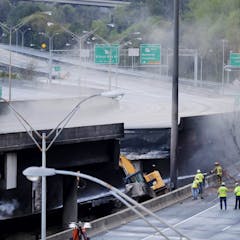
Artikel-artikel mengenai Telecommunications
Menampilkan 1 - 20 dari 95 artikel

The telecommunications giant is looking to meet its own cost-cutting targets as it faces increasing competition in a maturing market.

A review of the November 2023 Optus outage has sparked an overhaul for the Triple Zero system and more transparency for telcos.

Embattled Optus chief Kelly Bayer Rosmarin who oversaw two network outages in the last year has resigned after admitting her company had no disaster management plan.

The Optus chief will face some tough questions about the company’s poor handling of last week’s catastrophic network outage when she appears before a Senate inquiry.

Optus suffered one of the largest telecommunications outages in Australian history today. Here are the factors that can cause such events.

Optus has let the story run away from it and failed to show contrition, for the second time in a little over a year.

Families living on Mornington Island have to make compromises due to a lack of digital services – including missing out on cultural activities on Country .

Too many New Zealanders were cut off without phone or internet access after Cyclone Gabrielle hit. Here are some of the back-up options we need before the next disaster strikes.

Understanding when, where and why fishing vessels sometimes turn off their transponders is a key step toward curbing illegal fishing and other crimes on the high seas.

The deployment of 5G networks depends on the compatibility of the instruments and protocols of a handful of industry players.

Australia’s privacy laws are so vague a company can keep your data as long as it ‘needs’.

Optus used press releases, and Twitter when it could have contacted its customers by text.

NASA, NOAA and SpaceWeather say a coronal mass ejection will reach Earth this week. It has the potential to knock out communications in some parts of the world.

Every few centuries the Sun blasts the Earth with a huge amount of high-energy particles. If it were to happen today, it would wreak havoc on technology.

The BBC has resumed broadcasting via shortwave radio to ensure civilians can access the news.

Undersea cables are made of bundles of glass fibres, each one as thick as a strand of human hair.

Airplanes use radio waves to determine how far off the ground they are. New 5G cellphone services come close to the same frequencies the airplanes use. Here’s how that can be a problem.

Given their vital role in communications, the global economy and security, the rules governing undersea cables need overhauling.

5G is 10 times faster than 4G, promising better wireless internet access. It’s also expected to put the Internet of Things revolution in high gear.

As President Biden signs the bipartisan infrastructure bill, it’s important to determine which road, freight and information networks are the most vital to protect.
